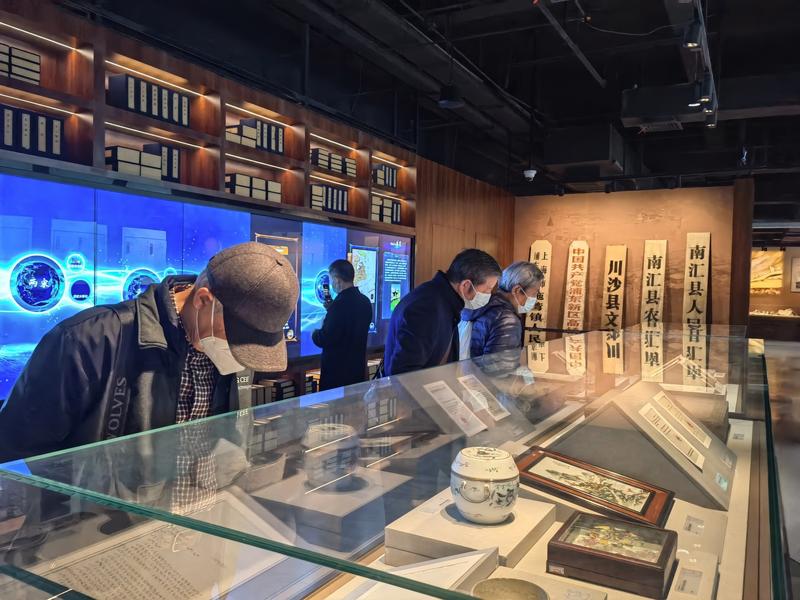 The Pudong History Museum attracts visitors to learn stories about the area. (PHOTO PROVIDED TO CHINA DAILY)
The Pudong History Museum attracts visitors to learn stories about the area. (PHOTO PROVIDED TO CHINA DAILY)
Dedicated to documenting the stories about Shanghai's Pudong New Area before its opening-up and development in the 1990s, the Pudong History Museum was officially opened on Feb 16.
The new museum contains exhibits that tell of the history of the eastern bank of the Huangpu River, from its ecological evolution through centuries, to the administration changes of dynasties, to the stories of local heroes.
Huang Wei, director of the publicity department of the Pudong New Area, describes the museum as the "final missing piece on a map" of the area's history.
Originally known as the Nanhui Museum, the museum first opened in 2005 in Nanhui district. Four years later, Nanhui was integrated into Pudong, and thus had its name changed to the Nanhui Museum of the Pudong New Area.
In 2021, the museum underwent a major renovation.
The renovated space now spans 3,510 square meters. Aside from the permanent showcase of Pudong's history and culture, the museum is also presenting its first temporary showcase which features couplet calligraphy by local artist Chen Zonghuang.
"Cultural and museum resources used to be rare in the Pudong New Area," said Yan Bo, deputy head of the Pudong New Area, at the museum's opening ceremony.
 Feng Jianzhong, head of the collectors' society in Shanghai's Pudong New Area. (ZHANG KUN / CHINA DAILY)
Feng Jianzhong, head of the collectors' society in Shanghai's Pudong New Area. (ZHANG KUN / CHINA DAILY)
"I hope the new museum can join hands with other museums and cultural facilities near the area. We can design new tour packages for visitors and integrate cultural experiences with sightseeing and leisure activities.
"We hope to collaborate with leading institutions, such as the Shanghai Museum to present two themed exhibitions about Pudong every year."
The opening exhibition showcases several objects that have been lent by the Shanghai Museum and the Shanghai History Museum.
They include a collection of jade, artifacts with inscriptions of the pattern for longevity, and objects inset with gold, all of which were unearthed from the tomb of Lu Shen (1477-1544) in Pudong in 1969.
The Lu family was a renowned clan in the Ming Dynasty (1368-1644) and had lived on the eastern bank of the Huangpu River and the Wusong River, also known today as Suzhou Creek. It was the Lu clan that gave Shanghai's most important financial center its name — Lujiazui, or Lu's estuary.
Objects donated by people are on show, too. One donor is Feng Jianzhong, who is the head of the collectors' society in Pudong. Feng donated dozens of historical documents and objects that he gathered over the past decades, such as the original charter of a Pudong native association established in the 1930s, a blueprint of the association building in downtown Shanghai constructed in 1936, and historical maps of the area.
"I am a local and have deep feelings for my hometown. I am happy to see we have this new museum in Pudong. I think sharing my collections is more meaningful than keeping them at home," Feng says.


